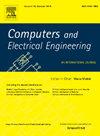A high-precision vehicle detection model based on focused feature extraction and multi-scale feature fusion for remote sensing images
IF 4
3区 计算机科学
Q1 COMPUTER SCIENCE, HARDWARE & ARCHITECTURE
引用次数: 0
Abstract
Efficient and accurate vehicle detection is crucial for intelligent transportation and autonomous driving. However, challenges for vehicle detection in complex backgrounds include the low detection accuracy due to insufficient feature extraction and fusion, and high hardware costs as a result of a large number of model parameters. To address these issues, this paper proposes a high-precision vehicle detection model (HVDM). Firstly, through integrating coordinate attention (CA) mechanism into Faster Implementation of Cross Stage Partial Bottleneck with 2 Convolutions(C2f) module, a focused feature extraction module (FFEM) is proposed, which replaces C2f module in backbone to improve the capacity of model for feature extraction. Secondly, triple weighted feature fusion pyramid network (TWFFPN) is constructed by introducing underlying small object feature layer and adding data connections between feature maps of different levels, which improves the ability of multi-scale feature fusion in the network. Finally, normalized Wasserstein distance (NWD) loss is used to substitute for complete intersection over union (CIoU) loss, so the network gets the same sensitivity to objects regardless of their sizes, increasing vehicle detection accuracy. To examine the effectiveness of HVDM, numerous experiments are carried out on datasets for object detection in aerial images (DOTA) and datasets for object detection in optical remote sensing images (DIOR). Experimental results show that our method has a higher accuracy than other methods in vehicle detection and the number of parameters in HVDM is almost the same as that in baseline YOLOv8, which indicates our model's good performance in balancing between detection accuracy and the number of parameters.
求助全文
约1分钟内获得全文
求助全文
来源期刊

Computers & Electrical Engineering
工程技术-工程:电子与电气
CiteScore
9.20
自引率
7.00%
发文量
661
审稿时长
47 days
期刊介绍:
The impact of computers has nowhere been more revolutionary than in electrical engineering. The design, analysis, and operation of electrical and electronic systems are now dominated by computers, a transformation that has been motivated by the natural ease of interface between computers and electrical systems, and the promise of spectacular improvements in speed and efficiency.
Published since 1973, Computers & Electrical Engineering provides rapid publication of topical research into the integration of computer technology and computational techniques with electrical and electronic systems. The journal publishes papers featuring novel implementations of computers and computational techniques in areas like signal and image processing, high-performance computing, parallel processing, and communications. Special attention will be paid to papers describing innovative architectures, algorithms, and software tools.
 求助内容:
求助内容: 应助结果提醒方式:
应助结果提醒方式:


